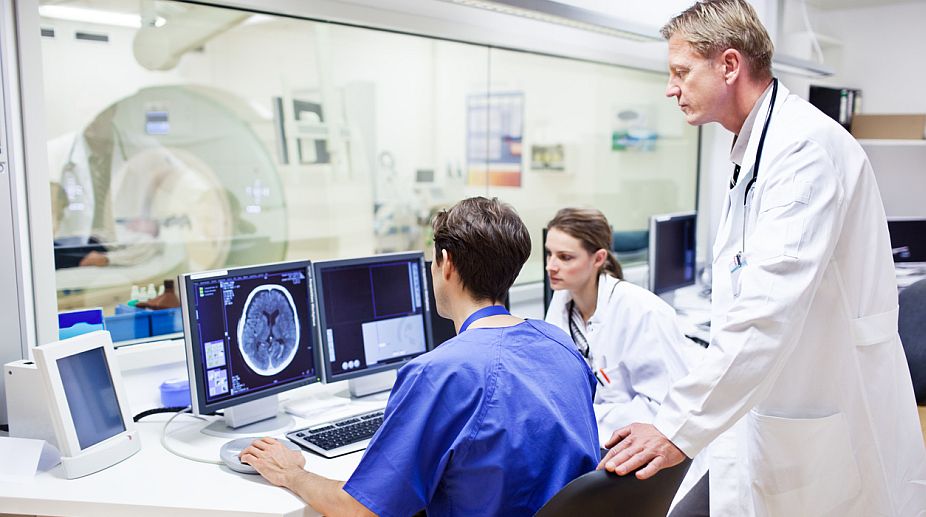Researchers studying the brains of infants who have older siblings with autism were able to identify 80 per cent of the babies who would be subsequently diagnosed with autism at two years of age.
The results, published this week in the journal Nature, stem from research led by the University of North Carolina to use magnetic resonance imaging (MRI) to measure the brains of "low-risk" infants, with no family history of autism, and "high-risk" infants who had at least one autistic older sibling, Xinhua news agency reported.
Advertisement
A computer algorithm was then used to predict autism before clinically diagnosable behaviours set in, subsequently making it the first study to show that it is possible to use brain biomarkers to identify which infants in a high-risk pool, namely those having an older sibling with autism, will be diagnosed with autism spectrum disorder, or ASD, at 24 months of age.
"Typically, the earliest we can reliably diagnose autism in a child is age 2, when there are consistent behavioural symptoms, and due to health access disparities the average age of diagnosis in the US is actually age 4," said co-author and University of Washington (UW) professor of speech and hearing sciences Annette Estes. "But in our study, brain imaging biomarkers at 6 and 12 months were able to identify babies who would be later diagnosed with ASD."
While researchers at four clinical sites in the United States took part, the project included hundreds of children across the country.
The researchers obtained MRI scans of children while they were sleeping at 6, 12 and 24 months of age, and assessed the babies' behaviour and intellectual ability at each visit.
They found that the babies who developed autism experienced a hyper-expansion of brain surface area from 6 to 12 months, as compared to babies who had an older sibling with autism but did not themselves show evidence of autism at 24 months of age.
Increased surface area growth rate in the first year of life was linked to increased growth rate of brain volume in the second year of life. Brain overgrowth was tied to the emergence of autistic social deficits in the second year.
By inputting these data, including MRI calculations of brain volume, surface area, and cortical thickness at 6 and 12 months of age, into a computer program, the researchers sought to classify babies most likely to meet ASD criteria at 24 months of age.
They found that, among infants with an older ASD sibling, the brain differences at 6 and 12 months of age successfully identified 80 per cent of those infants who would be clinically diagnosed with autism at 24 months of age.
The predictive power of the findings may lead to a diagnostic tool for ASD that could be used in the first year of life, before behavioural symptoms have emerged.
"We don't have such a tool yet," Estes was quoted as saying in a news release from UW. "But if we did, parents of high-risk infants wouldn't need to wait for a diagnosis of ASD at 2, 3 or even 4 years and researchers could start developing interventions to prevent these children from falling behind in social and communication skills … By the time ASD is diagnosed at 2 to 4 years, often children have already fallen behind their peers in terms of social skills, communication and language."











